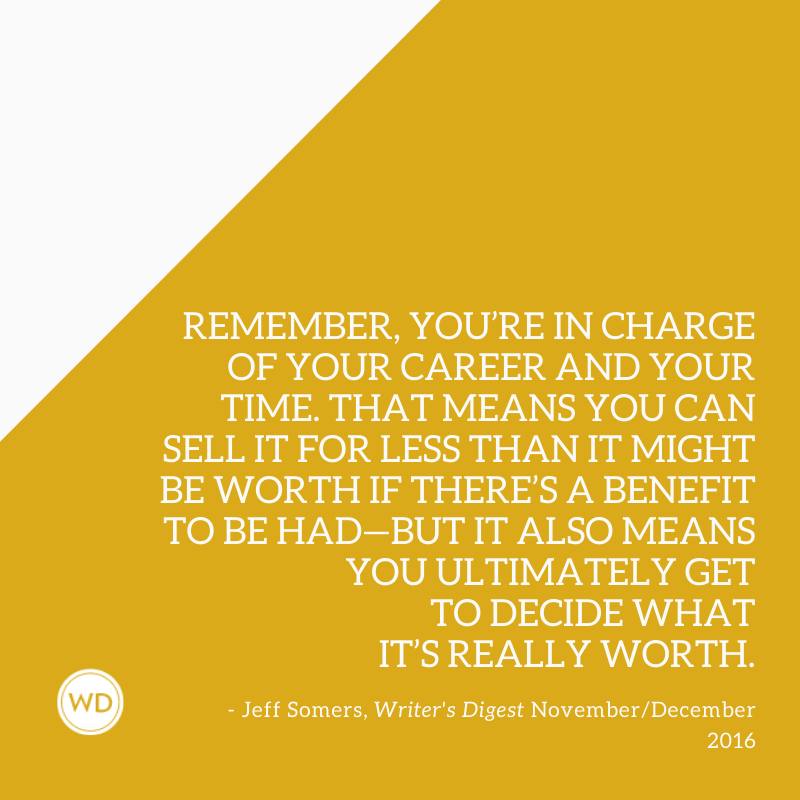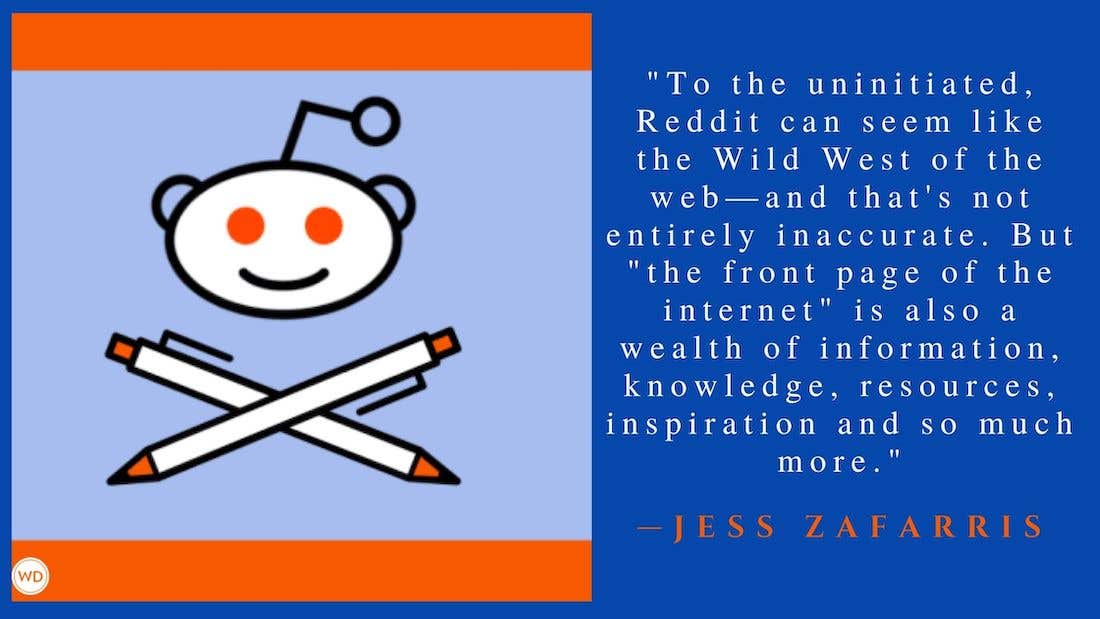5 Secrets to Fending Off Rejection Slips
Nonfiction columnist David Fryxell, outlines the five secrets to writing query letters that can help fend off rejection slips.
Here's another one of those awful truths that we need to acknowledge and get out of the way before you find success with your nonfiction: It's easier for an editor to say no to your query than it is to say yes.
In my July 2000 column I talked about how to get editors to say yes, and revealed five ways to make it easier to give you and your work a chance. Now that you've had a year to put those tips to work, it's time to talk about the dark side—the reasons editors say "no" without really giving your query a fair hearing.
Like it or not, when an editor sees your query he or she is looking to put a bullet through it. Firing off a quick rejection slip takes less time and spells less risk. Sure, your query could solve a problem for that editor—as we saw in this space a year ago—but most editors suffer from fear of commitment. Give them the slightest reason to say no to you, plant any doubt that your query might prove more trouble than it's worth, and bang! It's a quick rejection and on to the next victim, er, writer.
Ultimately, success depends on the quality of your idea and how well it matches the magazine's needs. But to have the best shot at success you need to get your query over the transom without offering an easy target for rejection. Here are five ways to bulletproof your query and make sure it gets the chance at "yes!" it deserves.
1. Make sure your idea hasn't just been done.
As important as it is to hew closely to a magazine's formula, a sure path to rejection is to pitch an idea that's essentially the same as something the magazine just printed. Even coming too close to a story that the magazine's competition recently ran can be the kiss of death.
This sounds obvious, but you'd be amazed at how many submissions get rejected on this basis alone. Some editors even have preprinted rejection letters where one of the options as a reason for saying no is: "Topic duplicates material recently published."
The worst part about pitching a rerun idea isn't getting your query bounced back to you, though. It also marks you in the editor's eyes as somebody who doesn't study the magazine before submitting a query. (Here, the volume of submissions some magazines get works in your favor, lessening the odds the editors will remember your blunder!)
Of course you're supposed to read every issue of every magazine you query, going back to the invention of movable type. But let's get serious: At least peek at the contents pages on the newsstand, or do a quick Web search to make sure you're not wasting time on a "been there, done that" query.
(On the bright side, if you do discover your idea is a case of great minds thinking alike, it shows that you and the editor are on the same wavelength, and you've done a good job of figuring out the magazine's formula. Give your idea a twist to make it different—but not too different—and start licking the stamps.)
2. Get the editor's name right—or skip it.
Nothing says "I didn't study your magazine before querying" and "I'm not a careful researcher" faster than getting the editor's name wrong. Misspelling the editor's name is a big no-no. Addressing your query to an editor who's been off the masthead for three years is another one, maybe worse. (It's like sending an anniversary card to a remarried man with the name of his first wife on the envelope.)
With the Internet, mega-newsstands and resources such as Writer's Market and WritersMarket.com at your fingertips, it's easy to get the editor's name right. If in doubt about which editor to address, pick the highest name on the masthead that doesn't have a corporate title such as "editorial director" or "group editor." If some flunky actually handles queries, don't worry—yours will get rerouted.
And if you can't be sure about the editor's name, just address your query to "Editor" or "Articles Editor." Better to be generic than to get it wrong.
3. Keep your query brief and simple.
Editors are looking for proven professionals with on-target ideas they can deliver on; anything in your query that distracts from that message detracts from your pitch.
Send a clean, typed, understated letter that briefly outlines your idea and your credentials for writing it. Include a few carefully selected clips that most closely match the piece you're proposing, along with an SASE. (If you don't have clips, stress your expertise in your letter. If you're a registered nurse pitching an idea about advances in patient care, make sure to mention your firsthand experience.) That's it. No multicolored, multifont extravaganza, no Powerpoint presentation, no CD-ROM with a multimedia tour of your writing career.
Keeping it simple also means querying first (except in the rare occasions where a market's guidelines say complete manuscripts are preferred). Don't submit a 40-page manuscript with photos pasted on the pages in imitation of a magazine layout. Don't mail the work-in-progress of your 1,500-page book, suggesting that the editor might want to choose an excerpt. Letter, clips, SASE-that's it.
4. Don't sweat the details.
How long will your article be? When is the deadline? Will it have two sidebars or none? Don't worry about it—deciding those details is why the editor gets the big money. Your query doesn't need to say, "I'm proposing an article of 1,500 words for your June issue. ... " After all, what if the editor needs 2,500 words—or likes your idea, but thinks it's worth no more than a 500-word short? Or what if the June issue is full? Don't give the editor an excuse to say "no."
Similarly, you can certainly suggest that you can provide sidebars and resource boxes. Or mention the availability of photos, maps or illustrations. But don't get into the nitty-gritty: "The article will be accompanied by six 8 1/2 x 11 photos, one map that must run in full color and a list of 153 resources for the reader to learn more." Let the editor earn her money and give you direction on these details.
5. Never be rude to an editor.
I know what you're thinking: Of course I'm not going to be rude! But that's exactly how editors take it when freelancers take a tack such as, "I know your magazine doesn't normally print articles like this, but I'm hoping you'll make an exception. ... " The editor's knee-jerk reaction is going to be: "If you know we don't print articles like this, why are you wasting my time?" Bang!
Like it or not, such queries are just plain rude. It's like being invited to a vegetarian's house for dinner and bringing spareribs: "I know you normally don't eat the flesh of dead animals, but I thought ... "
It's rude, too, and counterproductive to send queries that challenge or contradict something that's previously run in the magazine: "Your March 2001 article on the best sports cars was complete rubbish. Please consider for publication my piece on the really best sports cars. ... " Editors are only human, and they don't like being argued with or contradicted any more than, say, your spouse does.
Is all this fair? Shouldn't your idea be able to stand on its own merits, even if you spell the editor's name wrong and handwrite your query in chartreuse ink on fuchsia paper? Sure, but why should the world of writing and publishing work differently from the rest of the real world? You wouldn't show up for a job interview an hour late, still wearing your pajamas and not quite sure of the name of the company or what it does. A query is just like a little job interview on paper.
Don't let your ideas get shot down because you didn't give them the best possible chance. Bulletproof your queries and get past editors' defenses—and into their pages.






